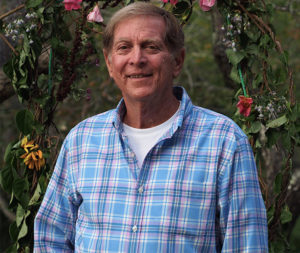 “I am so sorry, Mr. or Mrs. Patient, but nothing more can be done.” These are words that doctors, including eye specialists, hate to utter. Unfortunately, patients that have lost significant vision may feel abandoned with little or no recourse. For me, this rings true for patients suffering from age-related macular degeneration (AMD). Age-related macular disease is on the rise in the United States. The sight threatening “wet” form is projected to affect 3 million people by 2020. (1) This will dramatically affect the rapidly aging Baby Boomer generation, of which I am one. We can take steps to reduce our risk factors: not smoking, maintaining proper weight, using sun and UV protection, and maintaining a healthy diet rich in the leafy greens. But the reality at present is that there is no cure for the disease. Many treatment options at best may slow the progression and help stabilize vision loss.
“I am so sorry, Mr. or Mrs. Patient, but nothing more can be done.” These are words that doctors, including eye specialists, hate to utter. Unfortunately, patients that have lost significant vision may feel abandoned with little or no recourse. For me, this rings true for patients suffering from age-related macular degeneration (AMD). Age-related macular disease is on the rise in the United States. The sight threatening “wet” form is projected to affect 3 million people by 2020. (1) This will dramatically affect the rapidly aging Baby Boomer generation, of which I am one. We can take steps to reduce our risk factors: not smoking, maintaining proper weight, using sun and UV protection, and maintaining a healthy diet rich in the leafy greens. But the reality at present is that there is no cure for the disease. Many treatment options at best may slow the progression and help stabilize vision loss.
The good news is that research is aggressively seeking a cure by focusing on genetic risk factors and use of stem cells to replace lost retinal cells. For now, the other encouraging news is the benefit provided by practitioners in the Optometric sub-specialty of Low Vision. Low Vision practice deals with the reality of vision loss in a positive way to help those affected by the visual impairments of AMD. The low vision practitioner never dwells on the vision that is lost. The examination evaluates the goals and visual needs of the patient and prescribes optical aides, devices, special filters and makes recommendations to maximize and benefit the remaining vision.
Low vision as a sub-specialty gets very little public attention. The efforts to help the visually impaired often get overlooked and are not offered or mentioned by our colleagues. The substantial time required during the examination and the commitment to the extra training often discourages eye practices and individuals from providing these services. I personally discovered this during my low vision externship many years ago in Philadelphia. Many days we worked long hours in examining only a handful of patients. But, this provided a teaching and learning experience that has stayed with me over my 40 years of practicing. As externs and resident doctors we were trained never to use the term “legally blind”. We treated our patient as a whole person who is partially sighted. Examining a partially sighted patient can present challenges but our mentor Dr. Randy Jose taught us to be positive, creative, and to think outside the box.
I hope that the future brings a cure for eye diseases like age-related macular degeneration. In the meantime, especially for us Boomers, we must be mindful of the gift of vision.
Dr. Rick L. Hartman
References:
1. National Eye Institute. Eye Disease Fact Sheet





2 thoughts on “When Nothing More Can Be Done…”